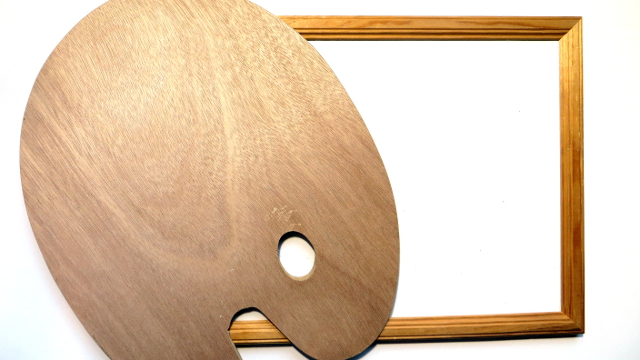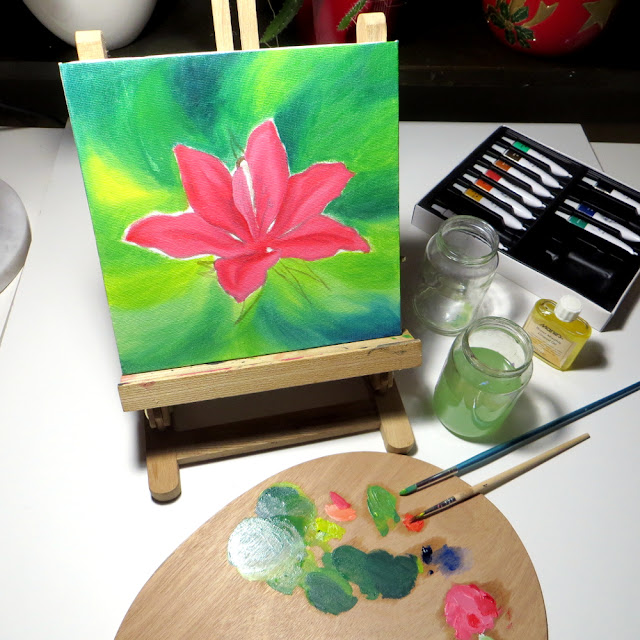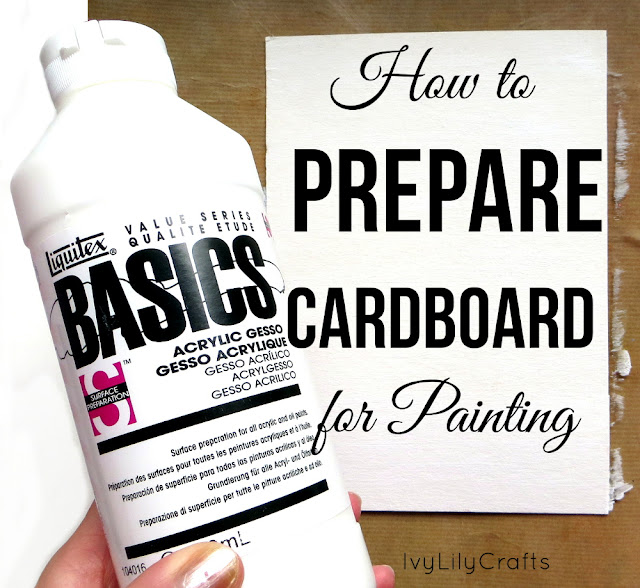Water Mixable Oil Painting
I've been wanting to try oil painting for a while and since I usually paint with watercolor and acrylics, I thought it would be easiest to start with water mixable oil paints.Water soluble oils allow you to clean the brushes with water and soap instead of using a toxic solvent like turpentine. You can also dilute water soluble oil paints with water (adding a little bit of paint at a time), but it's recommended to use linseed oil instead. Water soluble oil paints should dry faster than traditional oils, but when you add linseed oil, it will slow down the drying time. Read on or watch the video for my first impressions on water mixable oil painting.
You can paint on canvas, wood panel or cardboard. Prime cardboard with gesso (two layers). You also need something for mixing your paint. It could be the glass of a picture frame or a wood palette. You can wash the wood palette with water and soap afterwards.
I got the Marie's water mixable oil color studio set starter kit as a Christmas present. There's 12 basic colors and also a small bottle of water mixable linseed oil.
I wanted to paint something easy at first so I used an old lily sketch and transferred that onto canvas with butter paper. Then I made an underpainting of just the outlines in brown (maybe raw umber) acrylic paint so that the underpainting would dry fast.
Then I started painting with oils. The paint was really thick and I tried diluting it with water, but it didn't help much. Then I tried diluting the paint with linseed oil and it was much better. It was smoother and easier to blend the paint. I used a dry brush for blending.
Fat over lean rule
One thing that confused me about oil painting was the fat over lean rule. I thought it meant that the first layer should have less paint and then the next layer should be thicker. But it's actually about the amount of oil. Each new layer has to have more oil, because oil dries slower. You can add paint thinner in the first layer or use the paints straight from the tube. With traditional oils the solvent would be turpenoid or turpentine. And then in the next layer you need to have more oil so you could leave out the solvent or start adding oil like linseed oil.I made two oil paint layers for this painting. And I already added linseed oil to the first layer so I had to add at least the same amount of linseed oil to the second layer, to make sure the new layer won't crack. I covered the bigger areas in the first layer and added details in the second layer.
I was pretty impressed with the colors. I used only lemon yellow, phthalocyanine blue and zinc titanium white to mix all the greens of the background of the lily painting.
Art prints available in Redbubble and Society6.














Comments
Post a Comment